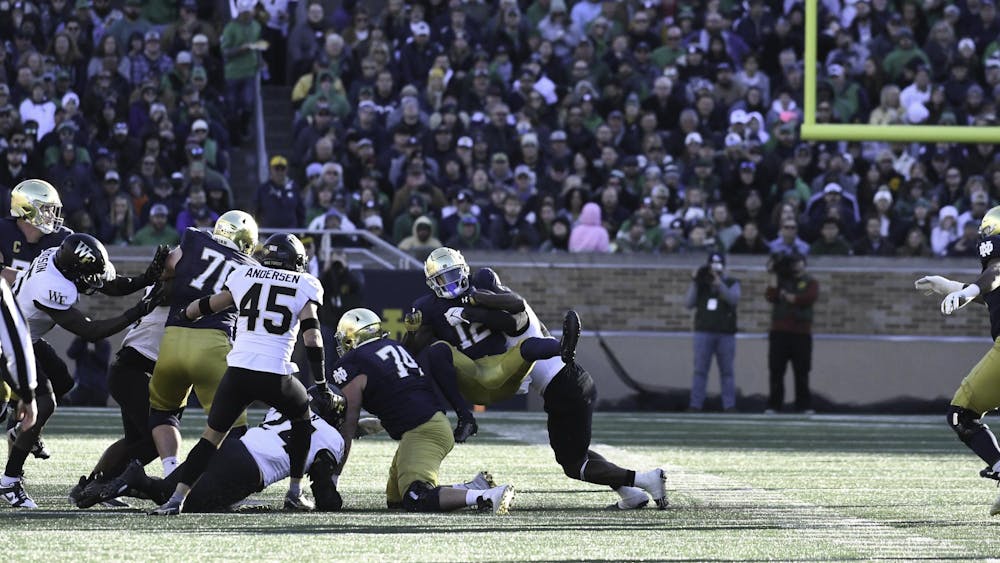On Monday, the Miami Marlins and Giancarlo Stanton agreed to a 13-year contract worth a total of $325 million, the biggest contract in North American professional sports history. The news of the contract extension and its sheer monstrosity surprised many of baseball’s observers for many reasons.
For one, the Marlins are considered one of the cheapest teams in Major League Baseball. Since the team was founded in 1993, they have undergone major fire sales in 1997, 2005 and 2012, and have had one of the five lowest Opening Day payrolls in baseball for seven of the past 10 years. Stanton's contract has an average annual value of $25 million, which is more than half of the Marlins' $46.4 million payroll in 2014.
The Marlins have also not had a winning season since 2009, the year before Stanton made his debut. They also often have the worst attendance for any team in baseball. As a result, it was widely accepted that Stanton would not want to stay in Miami. Due to the fact that the Marlins are notoriously cheap and that Stanton has not been happy with his experience in Miami, it was all but guaranteed that Stanton would be the latest young superstar to be traded by the Marlins. But here we are.
Many analysts have said the Marlins should not have signed Stanton to such a contract due to their traditionally low payroll. As the Texas Rangers experienced with Alex Rodriguez nearly a decade ago, a huge contract, even for a great player, can be crippling to a small-market team. However, this contract is an enormous gamble that the Marlins should be lauded for taking.
For one, the Marlins are committing to keep a homegrown star for a fan base that has experienced star player after star player leave. Additionally, for the Marlins, the best-case scenario is that the contract will provide tremendous value in the near-term and will not be crippling in the long-term, because the contract is heavily back-loaded with a player opt-out clause following the sixth season.
Stanton will be paid $6.5 million, $9 million and $14.5 million in the first three years of the deal. Last season, Stanton compiled 6.1 wins above replacement (WAR) in 145 games. WAR is calculated using all aspects of a player’s game — batting, base running and fielding — in order to determine his value in terms of runs added over a replacement level player. According to Fangraphs, the current value of one WAR is $6-7 million in free agency.
Thus, if Stanton were to average a conservative 5.5 WAR over the next three seasons, at a rate of $6.5 million per WAR, he would provide $107.25 million at a cost of $30 million, a surplus of $77.25 million. Over the next three years, 2018-2020, of the contract, Stanton will be paid a total of $77 million. Without taking into account the inevitable inflation of the value of a win above replacement in free agency, Stanton would figure to provide surplus value over those seasons as well, considering he will turn 30 before the 2020 season. Assuming an average WAR of 5.5 over the next 6 seasons, at a value of $7 million per WAR to account for inflation, Stanton would be worth $231 million, while "only" being paid $107 million, a surplus of $124 million.
Following the sixth season of the contract, in 2020, Stanton would be able to opt out of the contract. A large component of Stanton’s value comes from his power, with 132 home runs in the past four seasons, third best in baseball over that time span. Power tends to decline less with age and, with a general decline in the number of home runs in baseball, Stanton will likely still be considered valuable in 2020.
As Stanton is owed $218 million over the last seven years of the contract, the Marlins likely hope that he will opt out, as it will cost them an average of $31 million per year. It would also only be reasonable for Stanton to opt out if he thought he would be paid more than the $218 million he was already owed. If that were the case, then he would have very likely performed excellently in the first six seasons of his contract. It would also not be a surprise for him to get a better contract, as Robinson Cano received a 10-year, $240 million contract last season at 31 years old, the same age that Stanton would be.
Thus, if Stanton were to opt out, the Marlins would have received a huge amount of excess value in the first six years of the contract. However, if Stanton were not to opt out, the Marlins would likely not have received much excess value in their first six years, and in turn, they will be saddled with a massive contract for an already declining Stanton.
In that sense, the Marlins will either have stolen a great deal, or they will have a potentially crippling contract for a vastly overpaid player. Thus, for the Marlins, Giancarlo Stanton is either boom or bust.













